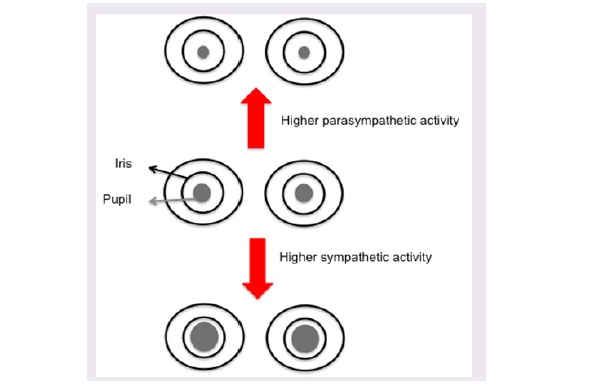The Utility of Iris-pupillary Area Ratio as a Non-invasive Index of Stress in Primates
DOI:
https://doi.org/10.5530/bems.4.1.6Keywords:
Iris-pupillary ratio, Sympathetic activity, Stress, Animal welfare, Digital imaging, Exotic animals, PrimatesAbstract
Background: As pupillary diameter is exclusively regulated by the autonomic nervous system, the assessment of pupil size (pupillometry) provides an indirect measure of sympathetic nervous system activity and hence an estimation of the degree of stress in the patient. A reliable, objective and non-invasive measure of stress is useful in achieving optimal animal welfare standards, especially with exotic or zoo animals. Hence, we compared the iris-pupillary ratios in populations of wild and zoo monkeys to determine the suitability of using this ratio as a non-invasive index of stress. Materials and Methods: Digital photographs of wild (n=32) and zoo (n=19) monkeys were used to measure the iris-pupillary ratio of both eyes using NIH Image-J software. The data are represented as Mean ± SD and were compared using unpaired t test with Welch’s correction. Results: The ratio of the iris-pupillary area in wild monkeys (17.03 ± 7.01) was significantly (p<0.0001) higher compared to zoo monkeys (8.80 ± 5.58). We observed a similar trend in the ratio of iris-pupillary perimeter (4.04 ± 1.22 Vs 2.91 ± 0.86). A lower ratio of iris-pupillary area or perimeter among zoo monkeys indicates pupillary dilation due to higher sympathetic activity and hence a higher level of stress. It is likely that the captive environment is a potential source of stress among zoo animals. We also evaluated the ratio of iris-pupillary mean grey values (1.58 ± 0.52 Vs 1.34 ± 1.09) and the ratio of irispupillary integrated density (27.69 ± 17.05 Vs 29.50 ± 10.95). These parameters were similar in the digital images of both wild and zoo monkeys, suggesting that the light conditions were similar in both groups. Conclusion: The data from this study support the utility of iris-pupillary area ratio as an objective, reliable and non-invasive index of degree of stress, which we believe will be a useful tool in managing the animal welfare of exotic animal species.










